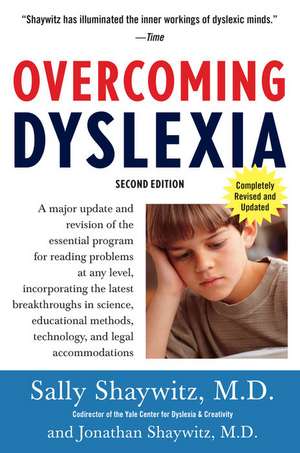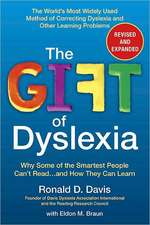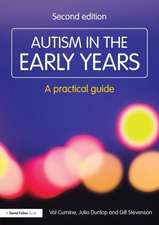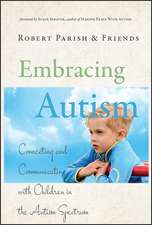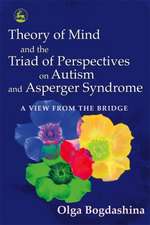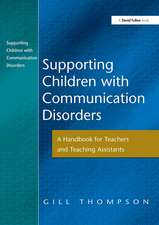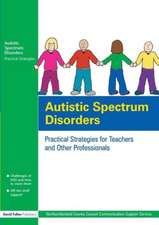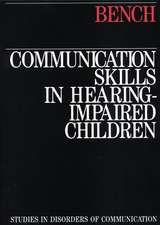Overcoming Dyslexia: A New and Complete Science-Based Program for Reading Problems at Any Level
Autor Sally E. Shaywitzen Limba Engleză Paperback – 31 dec 2004
From one of the world's preeminent experts on reading and dyslexia, the most comprehensive, up-to-date, and practical book available on identifying, understanding, and overcoming reading problems--now revised to reflect the latest research and evidence-based approaches.
Dyslexia is the most common learning disorder on the planet, affecting about one in five individuals, regardless of age or gender. Now a world-renowned expert gives us a substantially updated and augmented edition of her classic work: drawing on an additional fifteen years of cutting-edge research, offering new information on all aspects of dyslexia and reading problems, and providing the tools that parents, teachers, and all dyslexic individuals need. This new edition also offers:
• New material on the challenges faced by dyslexic individuals across all ages
• Rich information on ongoing advances in digital technology that have dramatically increased dyslexics' ability to help themselves
• New chapters on diagnosing dyslexia, choosing schools and colleges for dyslexic students, the co-implications of anxiety, ADHD, and dyslexia, and dyslexia in post-menopausal women
• Extensively updated information on helping both dyslexic children and adults become better readers, with a detailed home program to enhance reading
• Evidence-based universal screening for dyslexia as early as kindergarten and first grade - why and how
• New information on how to identify dyslexia in all age ranges
• Exercises to help children strengthen the brain areas that control reading
• Ways to raise a child's self-esteem and reveal her strengths
• Stories of successful men, women, and young adults who are dyslexic
Preț: 100.91 lei
Preț vechi: 125.29 lei
-19% Nou
Puncte Express: 151
Preț estimativ în valută:
19.31€ • 20.04$ • 16.14£
19.31€ • 20.04$ • 16.14£
Carte disponibilă
Livrare economică 24 februarie-03 martie
Livrare express 07-13 februarie pentru 66.12 lei
Preluare comenzi: 021 569.72.76
Specificații
ISBN-13: 9780679781592
ISBN-10: 0679781595
Pagini: 414
Ilustrații: illustrations
Dimensiuni: 164 x 226 x 23 mm
Greutate: 0.77 kg
Editura: Vintage Books USA
ISBN-10: 0679781595
Pagini: 414
Ilustrații: illustrations
Dimensiuni: 164 x 226 x 23 mm
Greutate: 0.77 kg
Editura: Vintage Books USA
Notă biografică
Sally Shaywitz, MD, is Professor of Pediatrics at the Yale University School of Medicine and codirector of the Yale Center for the Study of Learning and Attention. A member of the National Reading Panel and the Institute of Medicine of the Academy of Sciences, and chosen as one of America’s Top Doctors by Castle Connolly, she lectures regularly throughout the country and has appeared on CNN, Good Morning America and The Today Show.
Extras
I now want to gather together all the clues that combined will serve as an early-warning system for recognizing dyslexia. The clues will help you answer the question: Should my son or daughter (or I) be evaluated for dyslexia?
No one wants to be an “alarmist” and put her child through an evaluation for trivial or transient bumps along the road to reading. Evaluations can take time, and those carried out privately can be expensive. But I think we have to remind ourselves that our children are precious, oneof-a-kind individuals and have only one life to live. If we elect not to evaluate a child and that child later proves to have dyslexia, we cannot give those lost years back to him. The human brain is resilient, but there is no question that early intervention and treatment bring about more positive change at a faster pace than an intervention provided to an older child. And then there is the erosion of self-esteem that accrues over the years as a child struggles to read.
Childhood is a time for learning. A child who delays breaking the phonetic code will miss much of the reading practice that is essential to building fluency and vocabulary; as a consequence, he will fall further and further behind in acquiring comprehension skills and knowledge of the world around him. To see this happen to a child is sad, all the more because it is preventable.
Joseph Torgesen, a reading researcher at Florida State University who has carried out many of the critical studies on intervention, has this to say about the need to identify children early on and the cost of waiting: To the extent that we allow children to fall seriously behind at any point during early elementary school, we are moving to a “remedial” rather than a “preventive” model of intervention. Once children fall behind in the growth of critical word reading skills, it may require very intensive interventions to bring them back up to adequate levels of reading accuracy, and reading fluency may be even more difficult to restore because of the large amount of reading practice that is lost by children each month and year that they remain poor readers.
Most parents and teachers delay evaluating a child with reading difficulties because they believe the problems are just temporary, that they wll be outgrown. This is simply not true. Reading poblems are notoutgrown, they are persistent. As the participants in the Connecticut Longitudinal Study have demonstrated, at least three out of four children who read poorly in third grade continue to have reading problems in high school and beyond. What may seem to be tolerable and overlooked in a third grader certainly won’t be in a high schooler or young adult. Without identification and proven interventions, virtually all children who have reading difficulties early on will still struggle with reading when they are adults.
Luckily, parents can play an active role in the early identification of a reading problem. All that is required is an observant parent who knows what she is looking for and who is willing to spend time with her child listening to him speak and read.
The specific signs of dyslexia, both weaknesses and strengths, in any one individual will vary according to the age and educational level of that person. The five-year-old who can’t quite learn his letters becomes the six-year-old who can’t match sounds to letters and the fourteen-year-old who dreads reading out loud and the twenty-four-year-old who reads excruciatingly slowly. The threads persist throughout a person’s life. The key is knowing how to recognize them at different periods during development. Therefore, I have gathered the clues together to provide three distinct portraits of dyslexia: first, in early childhood from preschool through first grade; next, in school-age children from second grade on; and, last, in young adults and adults.
Clues to Dyslexia in Early Childhood
The earliest clues involve mostly spoken language. The very first clue to a language (and reading) problem may be delayed language. Once the child begins to speak, look for the following problems:
The Preschool Years
• Trouble learning common nursery rhymes such as “Jack and Jill” and “Humpty Dumpty”
• A lack of appreciation of rhymes
• Mispronounced words; persistent baby talk
• Difficulty in learning (and remembering) names of letters
• Failure to know the letters in his own name
Kindergarten and First Grade
• Failure to understand that words come apart; for example, that batboy can be pulled apart into bat and boy, and, later on, that the word bat can be broken down still further and sounded out as: “b” “aaaa” “t”
• Inability to learn to associate letters with sounds, such as being unable to connect the letter b with the “b” sound
• Reading errors that show no connection to the sounds of the letters; for example, the word big is read as goat
• The inability to read common one-syllable words or to sound out even the simplest of words, such as mat, cat, hop, nap
• Complaints about how hard reading is, or running and hiding when it is time to read
• A history of reading problems in parents or siblings
In addition to the problems of speaking and reading, you should be looking for these indications of strengths in higher-level thinking processes:
• Curiosity
• A great imagination
• The ability to figure things out
• Eager embrace of new ideas
• Getting the gist of things
• A good understanding of new concepts
• Surprising maturity
• A large vocabulary for the age group
• Enjoyment in solving puzzles
• Talent at building models
• Excellent comprehension of stories read or told to him
Clues to Dyslexia From Second Grade On
Problems in Speaking
• Mispronunciation of long, unfamiliar, or complicated words; the fracturing of words–leaving out parts of words or confusing the order of the parts of words; for example, aluminum becomes amulium
• Speech that is not fluent–pausing or hesitating often when speaking, lots of um’s during speech, no glibness
• The use of imprecise language, such as vague references to stuff or things instead of the proper name of an object
• Not being able to find the exact word, such as confusing words that sound alike: saying tornado instead of volcano, substituting lotion for ocean, or humanity for humidity
• The need for time to summon an oral response or the inability to come up with a verbal response quickly when questioned
• Difficulty in remembering isolated pieces of verbal information (rote memory)–trouble remembering dates, names, telephone numbers, random lists
Problems in Reading
• Very slow progress in acquiring reading skills
• The lack of a strategy to read new words
• Trouble reading unknown (new, unfamiliar) words that must be sounded out; making wild stabs or guesses at reading a word; failure to systematically sound out words
• The inability to read small “function” words such as that, an, in
• Stumbling on reading multisyllable words, or the failure to come close to sounding out the full word
• Omitting parts of words when reading; the failure to decode parts within a word, as if someone had chewed a hole in the middle of the word, such as conible for convertible
• A terrific fear of reading out loud; the avoidance of oral reading
• Oral reading filled with substitutions, omissions, and mispronunciations
• Oral reading that is choppy and labored, not smooth or fluent
• Oral reading that lacks inflection and sounds like the reading of a foreign language
• A reliance on context to discern the meaning of what is read
• A better ability to understand words in context than to read isolated single words
• Disproportionately poor performance on multiple choice tests
• The inability to finish tests on time
• The substitution of words with the same meaning for words in the text he can’t pronounce, such as car for automobile
• Disastrous spelling, with words not resembling true spelling; some spellings may be missed by spell check
• Trouble reading mathematics word problems
• Reading that is very slow and tiring
• Homework that never seems to end, or with parents often recruited as readers
• Messy handwriting despite what may be an excellent facility at word processing–nimble fingers
• Extreme difficulty learning a foreign language
• A lack of enjoyment in reading, and the avoidance of reading books or even a sentence
• The avoidance of reading for pleasure, which seems too exhausting
• Reading whose accuracy improves over time, though it continues to lack fluency and is laborious
• Lowered self-esteem, with pain that is not always visible to others
• A history of reading, spelling, and foreign language problems in family members
In addition to signs of a phonologic weakness, there are signs of strengths in higher-level thinking processes:
• Excellent thinking skills: conceptualization, reasoning, imagination, abstraction
• Learning that is accomplished best through meaning rather than rote memorization
• Ability to get the “big picture”
• A high level of understanding of what is read to him
• The ability to read and to understand at a high level overlearned (that is, highly practiced) words in a special area of interest; for example, if his hobby is restoring cars, he may be able to read auto mechanics magazines
• Improvement as an area of interest becomes more specialized and focused, when he develops a miniature vocabulary that he can read
• A surprisingly sophisticated listening vocabulary
• Excellence in areas not dependent on reading, such as math, computers, and visual arts, or excellence in more conceptual (versus factoid-driven) subjects such as philosophy, biology, social studies, neuroscience, and creative writing
Clues to Dyslexia in Young Adults and Adults
Problems in Speaking
• Persistence of earlier oral language difficulties
• The mispronunciation of the names of people and places, and tripping over parts of words
• Difficulty remembering names of people and places and the confusion of names that sound alike
• A struggle to retrieve words: “It was on the tip of my tongue”
• Lack of glibness, especially if put on the spot
• Spoken vocabulary that is smaller than listening vocabulary, and hesitation to say aloud words that might be mispronounced
Problems in Reading
• A childhood history of reading and spelling difficulties
• Word reading becomes more accurate over time but continues to require great effort
• Lack of fluency
Should My Child Be Evaluated for Dyslexia?
• Embarrassment caused by oral reading: the avoidance of Bible study groups, reading at Passover seders, or delivering a written speech
• Trouble reading and pronouncing uncommon, strange, or unique words such as people’s names, street or location names, food dishes on a menu (often resorting to asking the waiter about the special of the day or resorting to saying, “I’ll have what he’s having,” to avoid the embarrassment f not being able to read the menu)
• Persistent reading problems
• The substitution of made-up words during reading for words that cannot be pronounced–for example, metropolitan becomes mitan–and a failure to recognize the word metropolitan when it is seen again or heard in a lecture the next day
• Extreme fatigue from reading
• Slow reading of most materials: books, manuals, subtitles in foreign films
• Penalized by multiple-choice tests
• Unusually long hours spent reading school or work-related materials
• Frequent sacrifice of social life for studying
• A preference for books with figures, charts, or graphics
• A preference for books with fewer words per page or with lots of white showing on a page
• Disinclination to read for pleasure
• Spelling that remains disastrous and a preference for less complicated words in writing that are easier to spell
• Particularly poor performance on rote clerical tasks
Signs of Strengths in Higher-Level Thinking Processes
• The maintenance of strengths noted in the school-age period
• A high learning capability
• A noticeable improvement when given additional time on
multiple-choice examinations
• Noticeable excellence when focused on a highly specialized area
such as medicine, law, public policy, finance, architecture, or basic
science
• Excellence in writing if content and not spelling is important
• A noticeable articulateness in the expression of ideas and feelings
• Exceptional empathy and warmth, and feeling for others
• Success in areas not dependent on rote memory
• A talent for high-level conceptualization and the ability to come
up with original insights
• Big-picture thinking
• Inclination to think out of the box
• A noticeable resilience and ability to adapt
These clues across the life span offer a portrait of dyslexia. Examine them carefully, think about them, and determine if any of these clues fit your child, you, or someone else you are close to. Look for clues in the weaknesses and strengths. Identifying the weaknesses makes it possible to spot dyslexia in children before they are expected to read and in adults after they have developed some degree of reading accuracy but are continuing to show the remnants of earlier problems, reading slowly and with great effort.
If you think you or your child has some of these problems, it is important to note how frequent they are and how many there are. You don’t need to worry about isolated clues or ones that appear very rarely. For you to be concerned, the symptoms must be persistent; anyone can mispronounce a word now and then, or confuse similar-sounding words occasionally. What you are looking for is a persistent pattern–the occurrence of a number of these symptoms over a prolonged period of time. That represents a likelihood of dyslexia.
From the Hardcover edition.
No one wants to be an “alarmist” and put her child through an evaluation for trivial or transient bumps along the road to reading. Evaluations can take time, and those carried out privately can be expensive. But I think we have to remind ourselves that our children are precious, oneof-a-kind individuals and have only one life to live. If we elect not to evaluate a child and that child later proves to have dyslexia, we cannot give those lost years back to him. The human brain is resilient, but there is no question that early intervention and treatment bring about more positive change at a faster pace than an intervention provided to an older child. And then there is the erosion of self-esteem that accrues over the years as a child struggles to read.
Childhood is a time for learning. A child who delays breaking the phonetic code will miss much of the reading practice that is essential to building fluency and vocabulary; as a consequence, he will fall further and further behind in acquiring comprehension skills and knowledge of the world around him. To see this happen to a child is sad, all the more because it is preventable.
Joseph Torgesen, a reading researcher at Florida State University who has carried out many of the critical studies on intervention, has this to say about the need to identify children early on and the cost of waiting: To the extent that we allow children to fall seriously behind at any point during early elementary school, we are moving to a “remedial” rather than a “preventive” model of intervention. Once children fall behind in the growth of critical word reading skills, it may require very intensive interventions to bring them back up to adequate levels of reading accuracy, and reading fluency may be even more difficult to restore because of the large amount of reading practice that is lost by children each month and year that they remain poor readers.
Most parents and teachers delay evaluating a child with reading difficulties because they believe the problems are just temporary, that they wll be outgrown. This is simply not true. Reading poblems are notoutgrown, they are persistent. As the participants in the Connecticut Longitudinal Study have demonstrated, at least three out of four children who read poorly in third grade continue to have reading problems in high school and beyond. What may seem to be tolerable and overlooked in a third grader certainly won’t be in a high schooler or young adult. Without identification and proven interventions, virtually all children who have reading difficulties early on will still struggle with reading when they are adults.
Luckily, parents can play an active role in the early identification of a reading problem. All that is required is an observant parent who knows what she is looking for and who is willing to spend time with her child listening to him speak and read.
The specific signs of dyslexia, both weaknesses and strengths, in any one individual will vary according to the age and educational level of that person. The five-year-old who can’t quite learn his letters becomes the six-year-old who can’t match sounds to letters and the fourteen-year-old who dreads reading out loud and the twenty-four-year-old who reads excruciatingly slowly. The threads persist throughout a person’s life. The key is knowing how to recognize them at different periods during development. Therefore, I have gathered the clues together to provide three distinct portraits of dyslexia: first, in early childhood from preschool through first grade; next, in school-age children from second grade on; and, last, in young adults and adults.
Clues to Dyslexia in Early Childhood
The earliest clues involve mostly spoken language. The very first clue to a language (and reading) problem may be delayed language. Once the child begins to speak, look for the following problems:
The Preschool Years
• Trouble learning common nursery rhymes such as “Jack and Jill” and “Humpty Dumpty”
• A lack of appreciation of rhymes
• Mispronounced words; persistent baby talk
• Difficulty in learning (and remembering) names of letters
• Failure to know the letters in his own name
Kindergarten and First Grade
• Failure to understand that words come apart; for example, that batboy can be pulled apart into bat and boy, and, later on, that the word bat can be broken down still further and sounded out as: “b” “aaaa” “t”
• Inability to learn to associate letters with sounds, such as being unable to connect the letter b with the “b” sound
• Reading errors that show no connection to the sounds of the letters; for example, the word big is read as goat
• The inability to read common one-syllable words or to sound out even the simplest of words, such as mat, cat, hop, nap
• Complaints about how hard reading is, or running and hiding when it is time to read
• A history of reading problems in parents or siblings
In addition to the problems of speaking and reading, you should be looking for these indications of strengths in higher-level thinking processes:
• Curiosity
• A great imagination
• The ability to figure things out
• Eager embrace of new ideas
• Getting the gist of things
• A good understanding of new concepts
• Surprising maturity
• A large vocabulary for the age group
• Enjoyment in solving puzzles
• Talent at building models
• Excellent comprehension of stories read or told to him
Clues to Dyslexia From Second Grade On
Problems in Speaking
• Mispronunciation of long, unfamiliar, or complicated words; the fracturing of words–leaving out parts of words or confusing the order of the parts of words; for example, aluminum becomes amulium
• Speech that is not fluent–pausing or hesitating often when speaking, lots of um’s during speech, no glibness
• The use of imprecise language, such as vague references to stuff or things instead of the proper name of an object
• Not being able to find the exact word, such as confusing words that sound alike: saying tornado instead of volcano, substituting lotion for ocean, or humanity for humidity
• The need for time to summon an oral response or the inability to come up with a verbal response quickly when questioned
• Difficulty in remembering isolated pieces of verbal information (rote memory)–trouble remembering dates, names, telephone numbers, random lists
Problems in Reading
• Very slow progress in acquiring reading skills
• The lack of a strategy to read new words
• Trouble reading unknown (new, unfamiliar) words that must be sounded out; making wild stabs or guesses at reading a word; failure to systematically sound out words
• The inability to read small “function” words such as that, an, in
• Stumbling on reading multisyllable words, or the failure to come close to sounding out the full word
• Omitting parts of words when reading; the failure to decode parts within a word, as if someone had chewed a hole in the middle of the word, such as conible for convertible
• A terrific fear of reading out loud; the avoidance of oral reading
• Oral reading filled with substitutions, omissions, and mispronunciations
• Oral reading that is choppy and labored, not smooth or fluent
• Oral reading that lacks inflection and sounds like the reading of a foreign language
• A reliance on context to discern the meaning of what is read
• A better ability to understand words in context than to read isolated single words
• Disproportionately poor performance on multiple choice tests
• The inability to finish tests on time
• The substitution of words with the same meaning for words in the text he can’t pronounce, such as car for automobile
• Disastrous spelling, with words not resembling true spelling; some spellings may be missed by spell check
• Trouble reading mathematics word problems
• Reading that is very slow and tiring
• Homework that never seems to end, or with parents often recruited as readers
• Messy handwriting despite what may be an excellent facility at word processing–nimble fingers
• Extreme difficulty learning a foreign language
• A lack of enjoyment in reading, and the avoidance of reading books or even a sentence
• The avoidance of reading for pleasure, which seems too exhausting
• Reading whose accuracy improves over time, though it continues to lack fluency and is laborious
• Lowered self-esteem, with pain that is not always visible to others
• A history of reading, spelling, and foreign language problems in family members
In addition to signs of a phonologic weakness, there are signs of strengths in higher-level thinking processes:
• Excellent thinking skills: conceptualization, reasoning, imagination, abstraction
• Learning that is accomplished best through meaning rather than rote memorization
• Ability to get the “big picture”
• A high level of understanding of what is read to him
• The ability to read and to understand at a high level overlearned (that is, highly practiced) words in a special area of interest; for example, if his hobby is restoring cars, he may be able to read auto mechanics magazines
• Improvement as an area of interest becomes more specialized and focused, when he develops a miniature vocabulary that he can read
• A surprisingly sophisticated listening vocabulary
• Excellence in areas not dependent on reading, such as math, computers, and visual arts, or excellence in more conceptual (versus factoid-driven) subjects such as philosophy, biology, social studies, neuroscience, and creative writing
Clues to Dyslexia in Young Adults and Adults
Problems in Speaking
• Persistence of earlier oral language difficulties
• The mispronunciation of the names of people and places, and tripping over parts of words
• Difficulty remembering names of people and places and the confusion of names that sound alike
• A struggle to retrieve words: “It was on the tip of my tongue”
• Lack of glibness, especially if put on the spot
• Spoken vocabulary that is smaller than listening vocabulary, and hesitation to say aloud words that might be mispronounced
Problems in Reading
• A childhood history of reading and spelling difficulties
• Word reading becomes more accurate over time but continues to require great effort
• Lack of fluency
Should My Child Be Evaluated for Dyslexia?
• Embarrassment caused by oral reading: the avoidance of Bible study groups, reading at Passover seders, or delivering a written speech
• Trouble reading and pronouncing uncommon, strange, or unique words such as people’s names, street or location names, food dishes on a menu (often resorting to asking the waiter about the special of the day or resorting to saying, “I’ll have what he’s having,” to avoid the embarrassment f not being able to read the menu)
• Persistent reading problems
• The substitution of made-up words during reading for words that cannot be pronounced–for example, metropolitan becomes mitan–and a failure to recognize the word metropolitan when it is seen again or heard in a lecture the next day
• Extreme fatigue from reading
• Slow reading of most materials: books, manuals, subtitles in foreign films
• Penalized by multiple-choice tests
• Unusually long hours spent reading school or work-related materials
• Frequent sacrifice of social life for studying
• A preference for books with figures, charts, or graphics
• A preference for books with fewer words per page or with lots of white showing on a page
• Disinclination to read for pleasure
• Spelling that remains disastrous and a preference for less complicated words in writing that are easier to spell
• Particularly poor performance on rote clerical tasks
Signs of Strengths in Higher-Level Thinking Processes
• The maintenance of strengths noted in the school-age period
• A high learning capability
• A noticeable improvement when given additional time on
multiple-choice examinations
• Noticeable excellence when focused on a highly specialized area
such as medicine, law, public policy, finance, architecture, or basic
science
• Excellence in writing if content and not spelling is important
• A noticeable articulateness in the expression of ideas and feelings
• Exceptional empathy and warmth, and feeling for others
• Success in areas not dependent on rote memory
• A talent for high-level conceptualization and the ability to come
up with original insights
• Big-picture thinking
• Inclination to think out of the box
• A noticeable resilience and ability to adapt
These clues across the life span offer a portrait of dyslexia. Examine them carefully, think about them, and determine if any of these clues fit your child, you, or someone else you are close to. Look for clues in the weaknesses and strengths. Identifying the weaknesses makes it possible to spot dyslexia in children before they are expected to read and in adults after they have developed some degree of reading accuracy but are continuing to show the remnants of earlier problems, reading slowly and with great effort.
If you think you or your child has some of these problems, it is important to note how frequent they are and how many there are. You don’t need to worry about isolated clues or ones that appear very rarely. For you to be concerned, the symptoms must be persistent; anyone can mispronounce a word now and then, or confuse similar-sounding words occasionally. What you are looking for is a persistent pattern–the occurrence of a number of these symptoms over a prolonged period of time. That represents a likelihood of dyslexia.
From the Hardcover edition.
Recenzii
“In this gem of a book, Dr. Sally Shaywitz uses her voice, her images, her brain–and yes, her heart–to shine a piercing and clarifying light on what we so inadequately call ‘dyslexia.’ What is more, she shows how almost everyone can overcome it.” —Daniel D. Federman, M.D.,
“Fascinating. . . . Shaywitz has illuminated the inner workings of dyslexic minds.” —Time
“An important book.... For the first time, scientists are understanding how the brain works...in the act of reading. Front and center now is Sally Shaywitz.” –The Baltimore Sun
“Fascinating. . . . Shaywitz has illuminated the inner workings of dyslexic minds.” —Time
“An important book.... For the first time, scientists are understanding how the brain works...in the act of reading. Front and center now is Sally Shaywitz.” –The Baltimore Sun
Descriere
One of the world's leading experts on reading and dyslexia delivers this comprehensive, up-to-date book to help readers understand, identify, and overcome reading problems. Dr. Shaywitz translates cutting-edge research into an easy-to-follow plan of action offering help and hope. High school & older.
